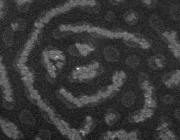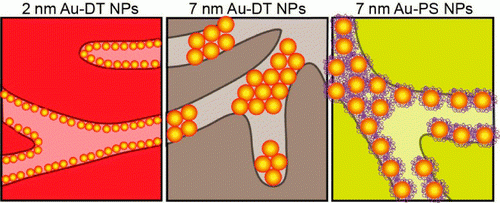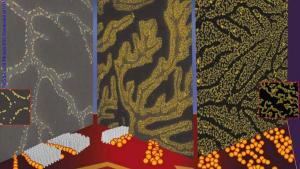Citation:
Date Published:
NOV 29Abstract:
The ability to assertible nanoparticles (NPs) into desired patterns. in a controlled fashion is crucial for the study. of collective properties and for the fabrication of a variety of devices. Drying mediated assembly directed by a template provides a facile route for organizing NPs in predefined patterns. We utilize the. branched topographical landscapes displayed by partially crystallized poly(ethylene glycol) (PEG) films as a generic template for studying. the drying mediated organization of dodecanethiol- and polystyrene thiol-protected gold NPs (Au-DT and Au-PS), and explore the combined effects of NP size and ligand, concentration, and spin rate on the distribution. of NPs inside the channels. We Show how NP concentration and the spin rate applied during NP deposition can be used to influence the tendency of NPs either to fill channel uniformly or to localize near the channel edges, explain the important role of the enhanced aggregation tendency of larger NPs on the resulting morphologies, and demonstrate how this tendency can be tuned by the proper choice Of ligands. The different effects are explained in the context of possible scenarios of drying mediated assembly by analyzing the relevant interactions and forces acting on the NPs during solvent evaporation.





